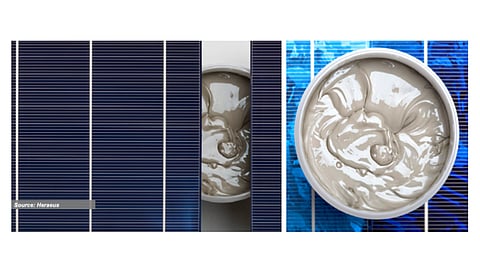

The metallization paste segment for solar cell processing is increasingly becoming dynamic in nature. Every paste maker is developing specific paste formulations for each large-scale solar cell manufacturer, dictated by the cell market's need for customization. Leading cell producers cite performance as the first qualification criterion, followed by pricing. These developments have led to shorter product cycles – and cell makers are quickly changing products as well as suppliers.
Paste suppliers are placing much greater emphasis on improving performance and reducing paste laydown. These two main topics branch out into several sub-streams. As for improving performance, the subjects of interest have been changing considerably. While front-contacting silver pastes for BSF architectures have been traditionally in focus, the market's priority has shifted to pastes for PERC of late. This cell architecture has emerged as the new industry benchmark. Paste manufacturers are even differentiating between multicrystalline and monocrystalline at the PERC level. Every leading paste supplier is striving to maximize its share in this area. The paste solutions for cell architectures based on n-type cells are also gaining in importance. Even more interesting, and perhaps a hot topic related to n-type cell architectures, is to add the passivated contacts scheme to n-PERT architecture.
Increase aspect ratio, reduce laydown
Irrespective of the cell technologies, a common effort among paste suppliers is to increase the aspect ratio and reduce the laydown. Reducing the finger width by printing through narrow screen openings is one main path followed to reduce paste consumption. A trend over the last few years has been increasing the number of busbars, which helps in reducing the finger thickness and, in turn, facilitates the drive to reduce material consumption. While several module makers are seriously evaluating a multi busbar approach, cells with five busbars are more common these days. Increasing the number of busbars not only reduces paste consumption, but also improves performance. However, since there is no standard for the number of busbars used in multi-busbar layout, which today varies between 9 and 12, the ambiguity prevails. Shingling is yet another module technology that might have an influence on the pastes used.
Knotless screens and low mesh screens are also helping to attain low finger width and better printing quality. Silver composites for advanced printing technologies, such as double and dual printing, are offered even exclusively for specific cell architectures. Paste producers continue to support the industry's march towards emitters with high sheet resistance. Substrate specific pastes for emitter profiles, meaning formulations suitable for monocrystalline wafers with particular emitter profiles and multicrystalline with different doping concentrations, are also available. The low temperature cured paste segment is gaining importance in light of increased activity in the heterojunction area. Leading paste manufacturers are trying to get a foot in the door in this new market, including the ones that had stayed out of high temperature fired silver pastes in the past, such as Toyo and Monocrystal.
For details on the key aspects and a product overview in Metallization Pastes for Solar Cells, see TaiyangNews Market Survey Metallization Pastes 2019/20, which can be downloaded for free.
